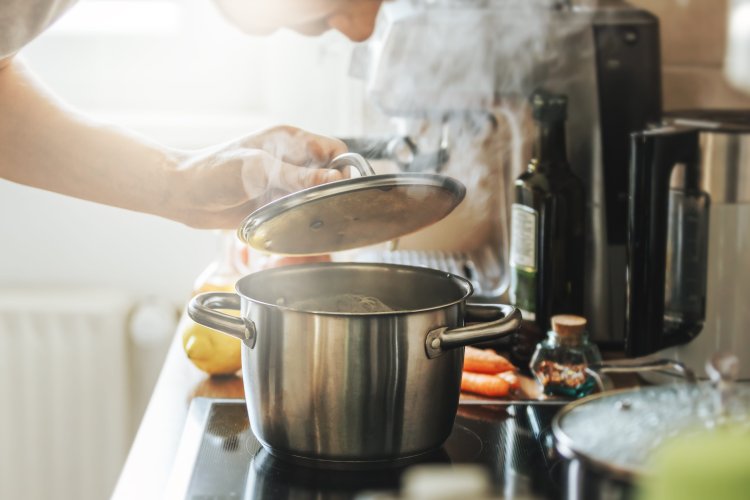Troubleshooting Common Pressure Cooker Issues and How to Fix Them
Pressure cookers are essential kitchen appliances that help speed up cooking while retaining nutrients and flavors

Pressure cookers are essential kitchen appliances that help speed up cooking while retaining nutrients and flavors. However, like any kitchen equipment, they can sometimes encounter issues that may affect their performance. Understanding common pressure cooker problems and how to fix them can ensure safe and efficient cooking.
1. Pressure Cooker Not Building Pressure
Causes:
-
Improper sealing: If the lid is not properly sealed, steam can escape, preventing pressure buildup.
-
Faulty gasket: A worn-out or damaged gasket (rubber sealing ring) can cause leaks.
-
Insufficient liquid: Pressure cookers need enough liquid to generate steam and build pressure.
-
Clogged vent: Food particles or debris in the steam release vent can block pressure formation.
Solutions:
-
Ensure the lid is correctly locked in place before starting.
-
Inspect the gasket for cracks or wear and replace it if necessary.
-
Check the recipe and add the required amount of liquid (usually at least one cup of water).
-
Clean the steam vent with a toothpick or small brush to remove any blockages.
2. Excess Steam Escaping from the Lid
Causes:
-
Misaligned lid: If the lid is not aligned properly, steam will escape.
-
Worn-out gasket: A damaged or loose gasket can lead to excessive steam leakage.
-
Dirty sealing ring: Food residue on the sealing ring can prevent a tight seal.
Solutions:
-
Ensure the lid is aligned correctly and locked in place.
-
Check and replace the gasket if it shows signs of damage.
-
Clean the sealing ring thoroughly after every use.
3. Pressure Cooker Lid Stuck After Cooking
Causes:
-
High internal pressure: If there is still pressure inside, the lid will not open for safety reasons.
-
Vacuum seal effect: Rapid cooling can create a vacuum that makes the lid difficult to open.
Solutions:
-
Wait until the pressure naturally releases before trying to open the lid.
-
If the lid is still stuck, run cold water over the cooker’s lid to reduce pressure.
-
Check the pressure release valve and ensure it is fully open.
4. Food Burning at the Bottom
Causes:
-
Insufficient liquid: If there is not enough liquid, food can stick and burn.
-
High heat setting: Cooking on high heat for too long can cause food to scorch.
-
Food stuck in the vent: Clogged steam vents can cause uneven pressure, leading to burning.
Solutions:
-
Always follow recipe guidelines for the correct amount of liquid.
-
Use medium to low heat settings once the cooker has reached pressure.
-
Clean the steam vent to ensure proper functioning.
5. Pressure Cooker Taking Too Long to Build Pressure
Causes:
-
Cold ingredients: If ingredients are too cold, it may take longer to reach pressure.
-
Too much food: Overfilling the cooker can slow down the pressurization process.
-
Loose gasket: A loose or damaged gasket can affect pressure buildup.
Solutions:
-
Allow refrigerated ingredients to come to room temperature before cooking.
-
Avoid overfilling; most pressure cookers should not be more than two-thirds full.
-
Ensure the gasket is properly placed and not loose.
6. Pressure Release Valve Not Working
Causes:
-
Clogged valve: Food debris or grease buildup can block the valve.
-
Damaged valve: Wear and tear can affect the valve’s function.
Solutions:
-
Clean the pressure release valve thoroughly after each use.
-
If the valve is broken or not functioning correctly, replace it with a new one.
7. Foaming or Spitting Liquid from the Vent
Causes:
-
Starchy foods: Foods like beans, rice, and pasta create foam, which can block the vent.
-
Overfilled cooker: Too much food can cause excessive foaming.
Solutions:
-
Add a spoonful of oil to reduce foaming when cooking starchy foods.
-
Do not overfill the pressure cooker, especially when cooking beans or grains.
-
Allow a natural pressure release instead of quick release to prevent liquid from escaping.
8. Gasket Smelling Bad
Causes:
-
Absorbed food odors: Over time, the gasket can absorb strong food smells.
Solutions:
-
Soak the gasket in a mixture of baking soda and warm water for 15-20 minutes.
-
Store the lid separately to allow airflow and reduce odor buildup.
9. Electric Pressure Cooker Displaying Error Codes
Causes:
-
E1/E2 error: Usually indicates a faulty temperature sensor.
-
E3 error: Overheating due to insufficient liquid.
-
E4 error: Pressure sensor malfunction.
Solutions:
-
Refer to the manufacturer’s manual to decode error messages.
-
Add more liquid and restart the cooking process if overheating occurs.
-
If sensor errors persist, contact customer support for repairs.
Conclusion
Troubleshooting common pressure cooker issues is essential for maintaining efficiency and safety in your kitchen. Regular maintenance, including cleaning vents, checking the gasket, and using proper cooking techniques, can help prevent these problems. By understanding these simple fixes, you can ensure that your pressure cooker continues to function effectively for years to come.
Read more blogs on newswireengine.com
What's Your Reaction?
















.jpg)